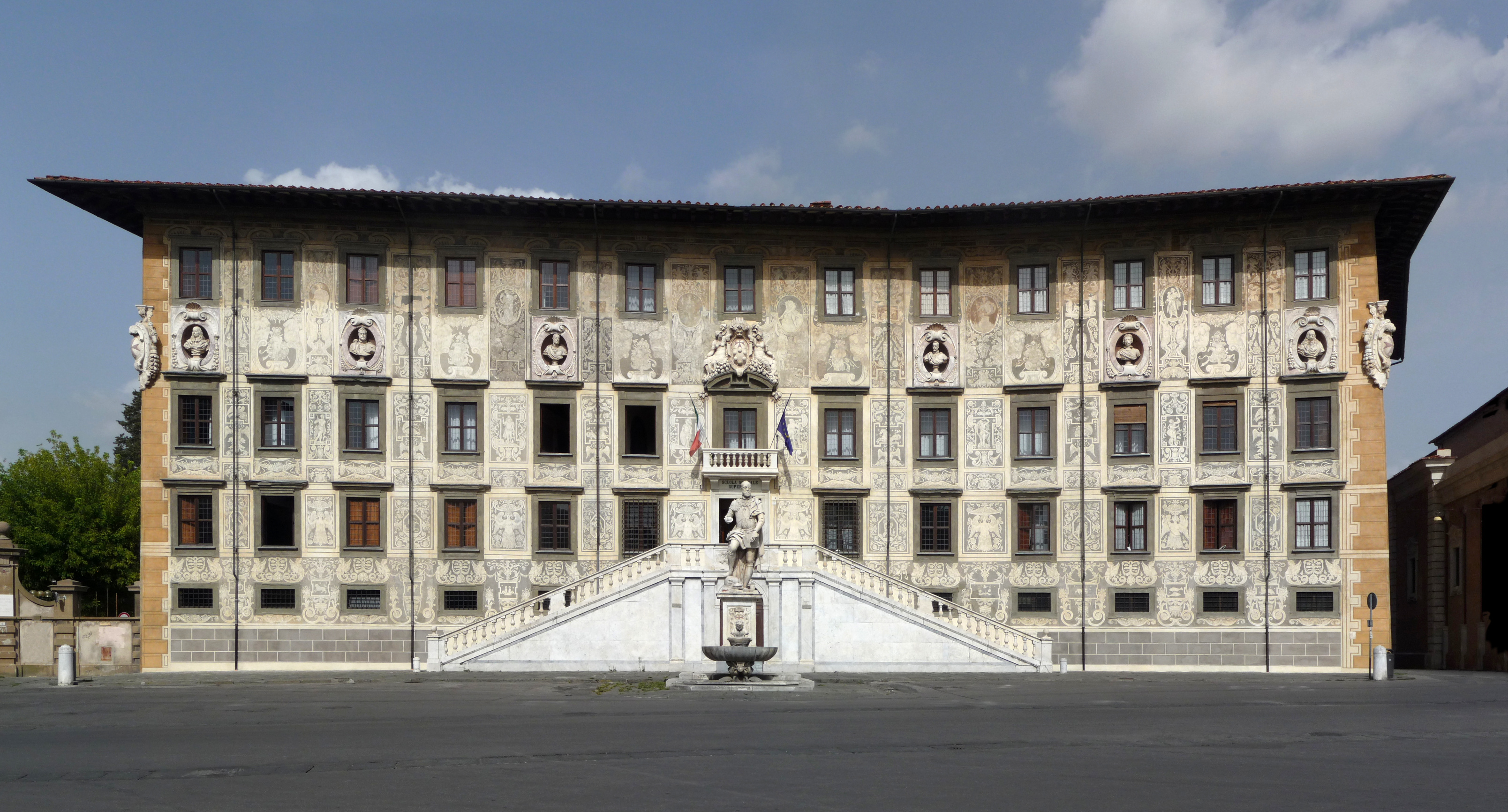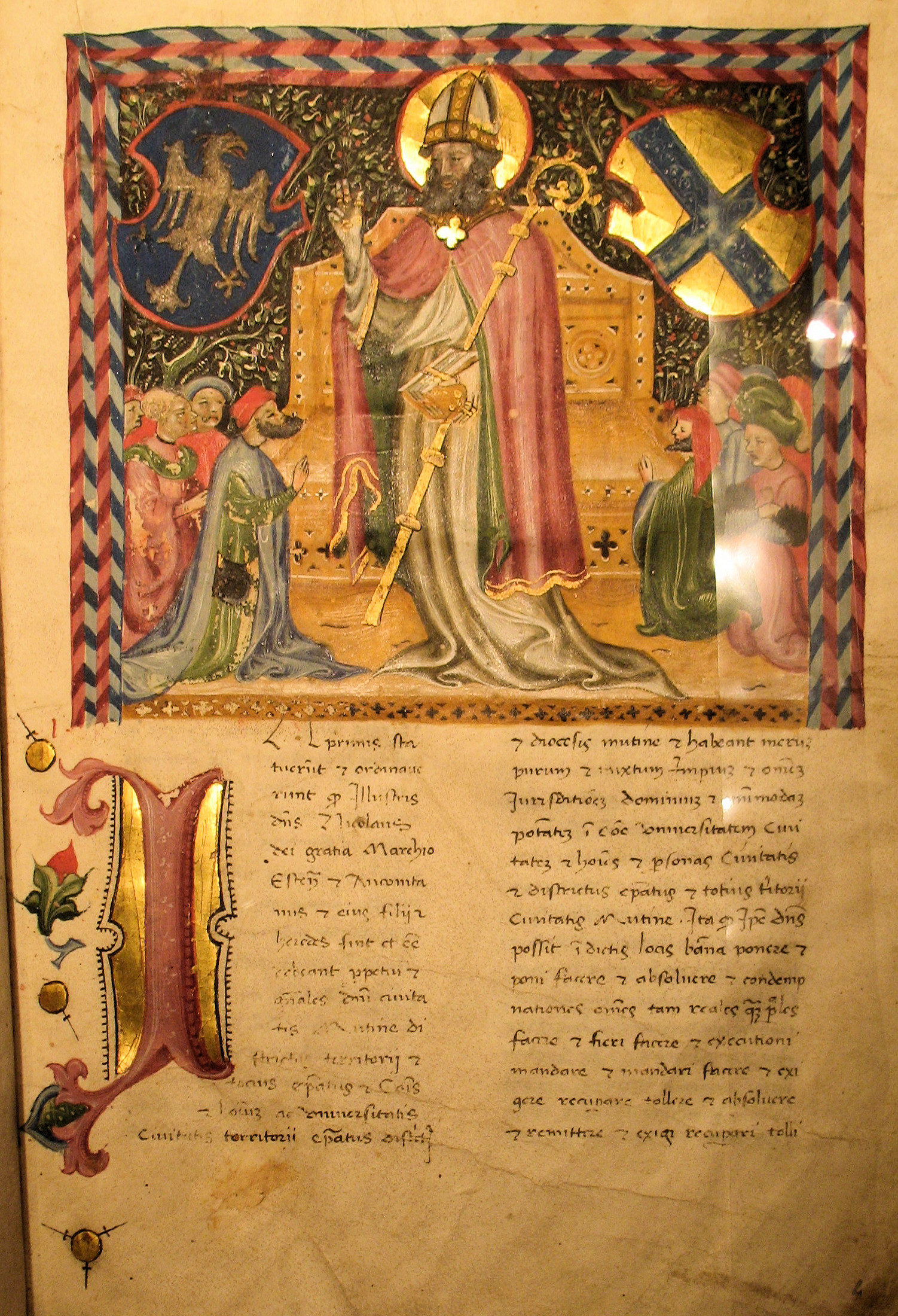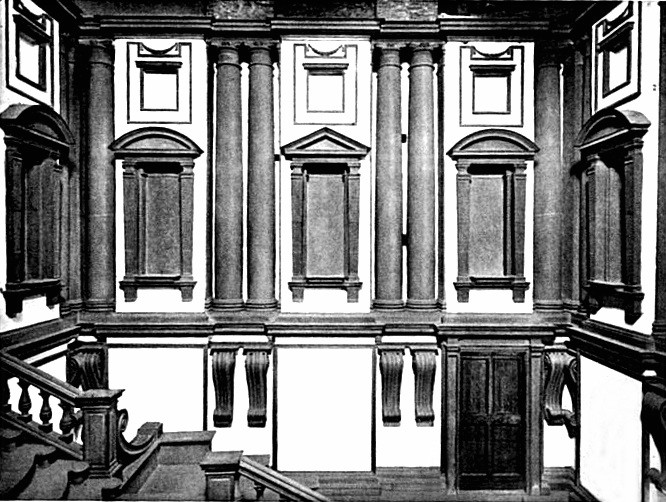|
Società Internazionale Per Lo Studio Del Medioevo Latino
The International Society for the Study of Medieval Latin Culture ( it, Società Internazionale per lo Studio del Medioevo Latino, known as SISMEL) is an Italian non-profit cultural institute, based in Florence. It promotes multi-disciplinary research into the history, art, literature and philology of the medieval Latin era. Structure SISMEL was founded by Claudio Leonardi in 1978, formally recognized in 1984 and was approved as a Superior Graduate School by the Ministero per i Beni e le Attività Culturali in 1997. In December 2012 SISMEL inaugurated the premises of the new headquarters, in a portion of a historic building, built in 1873 and located in the center of Florence in Via Montebello n. 7, between the train station of Santa Maria Novella and the river Arno. All activities of SISMEL were transferred here in 2013 from the former Carthusian monastery of Certosa di Firenze, which was the first base of the Society. In the same building of Via Montebello there is also the ... [...More Info...] [...Related Items...] OR: [Wikipedia] [Google] [Baidu] |
Sede Sismel
Sede may refer to: People * Gérard de Sède * Marc Dion Sédé (born 1987), Ivorian football player Places * Sede, Ethiopia * Sede, district of Santa Maria, Brazil Other * SEDE, the Subcommittee on Security and Defence of the European Parliament See also * Sde (other) * SDE (other) {{disambiguation, surname ... [...More Info...] [...Related Items...] OR: [Wikipedia] [Google] [Baidu] |
Florence
Florence ( ; it, Firenze ) is a city in Central Italy and the capital city of the Tuscany region. It is the most populated city in Tuscany, with 383,083 inhabitants in 2016, and over 1,520,000 in its metropolitan area.Bilancio demografico anno 2013, datISTAT/ref> Florence was a centre of medieval European trade and finance and one of the wealthiest cities of that era. It is considered by many academics to have been the birthplace of the Renaissance, becoming a major artistic, cultural, commercial, political, economic and financial center. During this time, Florence rose to a position of enormous influence in Italy, Europe, and beyond. Its turbulent political history includes periods of rule by the powerful Medici family and numerous religious and republican revolutions. From 1865 to 1871 the city served as the capital of the Kingdom of Italy (established in 1861). The Florentine dialect forms the base of Standard Italian and it became the language of culture throughout Ital ... [...More Info...] [...Related Items...] OR: [Wikipedia] [Google] [Baidu] |
Claudio Leonardi
Claudio is an Italian and Spanish first name. In Portuguese it is accented Cláudio. In Catalan and Occitan it is Claudi, while in Romanian it is Claudiu. Origin and history Claudius was the name of an eminent Roman gens, the most important members of which were: * Claudius, Emperor Tiberius Claudius Caesar Augustus Germanicus * Appius Claudius Sabinus Regillensis (fl. 486 BC), founder of the family, originally a Sabine known as Attius Clausus. * Appius Claudius Crassus (fl.450BC), public official, decemvir in 451 BC, appointed to codify the laws. * Appius Claudius Caecus (fl.300BC), official orator, best known for the highway named after him, the Appian Way. Consul in 307 & 296. * Claudius Gothicus (210–270), officer in the Roman army and a provincial governor First name: Claudio Claudio became a popular first name due to the spread of Christianity during the Middle Ages. Claudio is also used in Spanish and in Portuguese, accented as Cláudio. Notable people with the name ... [...More Info...] [...Related Items...] OR: [Wikipedia] [Google] [Baidu] |
Superior Graduate Schools In Italy
A Superior Graduate School (Italian: ''Scuola Superiore Universitaria'') is a completely independent institution from a legal point of view, which offers advanced training and research through university-type courses or is dedicated to teaching at graduate or post-doctoral level. The Superior Graduate Schools in Italy, the ''Scuola Superiore Universitaria'', are recognized by the Ministry of Education, Universities and Research (Italy) (MIUR) as fully autonomous. Three Superior Graduate Schools have "university status"; three institutes have the status of doctoral colleges, which function at graduate and post-graduate levels; and nine other schools are direct offshoots of universities, lacking independent university status. These state institutions are commonly referred to as ''Scuole di Eccellenza'' ("Schools of Excellence") The institutions offer recognized national and international titles, including the ''Diploma di Perfezionamento'' (equivalent to a doctorate), ''Dottorato ... [...More Info...] [...Related Items...] OR: [Wikipedia] [Google] [Baidu] |
Ministero Per I Beni E Le Attività Culturali
The Ministry of Culture ( it, Ministero della Cultura - MiC) is the Ministry (government department), ministry of the Government of Italy in charge of List of museums in France, national museums and the ''Monument historique, monuments historiques''. MiC's headquarters are located in the historic Roman Colleges, Collegio Romano Palace (via del Collegio Romano 27, in central Rome) and the current Italian Minister of Culture, Minister of Culture is Gennaro Sangiuliano. History It was set up in 1974 as the Ministry for Cultural Assets and Environments ( it, Ministero per i Beni Culturali ed Ambientali) by the Moro IV Cabinet through the decree read on 14 December 1974, n. 657, converted (with changes) from the law of 29 January 1975, n° 5. The new ministry (defined as — that is ''for'' cultural assets, showing the wish to create a mainly technical organ) largely has the remit and functions previously under the Ministry of Public Education (Italy), Ministry of Public Educat ... [...More Info...] [...Related Items...] OR: [Wikipedia] [Google] [Baidu] |
Certosa Di Firenze
Florence Charterhouse (''Certosa di Firenze'' or ''Certosa del Galluzzo'') is a charterhouse, or Carthusian monastery, located in the Florence suburb of Galluzzo, in central Italy. The building is a walled complex located on Monte Acuto, at the point of confluence of the Ema and Greve rivers. The charterhouse was founded in 1341 by the Florentine noble Niccolò Acciaioli, Grand Seneschal of the Kingdom of Naples, but continued to expand over the centuries as the recipient of numerous donations. In 1958 the monastery was taken over by Cistercian monks. The chapter house now holds five fresco lunettes by Pontormo from the cloister, damaged by exposure to the elements. The charterhouse inspired Le Corbusier for his urban projects. The monastery houses the Società Internazionale per lo Studio del Medioevo Latino The International Society for the Study of Medieval Latin Culture ( it, Società Internazionale per lo Studio del Medioevo Latino, known as SISMEL) is an Italian non- ... [...More Info...] [...Related Items...] OR: [Wikipedia] [Google] [Baidu] |
Medieval Literature
Medieval literature is a broad subject, encompassing essentially all written works available in Europe and beyond during the Middle Ages (that is, the one thousand years from the fall of the Western Roman Empire ca. AD 500 to the beginning of the Renaissance in the 14th, 15th or 16th century, depending on country). The literature of this time was composed of religious writings as well as secular works. Just as in modern literature, it is a complex and rich field of study, from the utterly sacred to the exuberantly profane, touching all points in-between. Works of literature are often grouped by place of origin, language, and genre. Languages Outside of Europe, medieval literature was written in Ethiopic, Syriac, Coptic, Japanese, Chinese, and Arabic, among many other languages. In Western Europe, Latin was the common language for medieval writing, since Latin was the language of the Roman Catholic Church, which dominated Western and Central Europe, and since the Church was v ... [...More Info...] [...Related Items...] OR: [Wikipedia] [Google] [Baidu] |
Biblioteca Medicea Laurenziana
The Laurentian Library (Biblioteca Medicea Laurenziana or BML) is a historic library in Florence, Italy, containing more than 11,000 manuscripts and 4,500 early printed books. Built in a cloister of the Medicean Basilica di San Lorenzo di Firenze under the patronage of the Medici pope Clement VII, the library was built to emphasize that the Medici were no longer just merchants but members of intelligent and ecclesiastical society. It contains the manuscripts and books belonging to the private library of the Medici family. The library building is renowned for its architecture that was designed by Michelangelo and is an example of Mannerism.Fazio, Michael; Moffett, Marian; Wodehouse, Lawrence, ''Buildings across Time'' (London: Lawrence King Publishing Ltd, 2009), pp. 308–310.Lotz, Wolfgang; Howard, Deborah, ''Architecture in Italy, 1500–1600'' (New Haven: Yale University Press, 1995), pp. 91–94. All of the book-bound manuscripts in the library are identified in its ''Codex Lau ... [...More Info...] [...Related Items...] OR: [Wikipedia] [Google] [Baidu] |
Agostino Paravicini Bagliani
Agostino Paravicini Bagliani (born 19 November 1943, Bergamo) is an Italian historian, specializing in the history of the papacy, cultural anthropology, and in the history of the body and the relationship between nature and society during the Middle Ages. Biography He received his PhD in humanities in 1968 and his professorship at the University of Fribourg (Switzerland) in 1978. From 1969 to 1981 he was Scriptor of the Vatican Library, and from 1972 to 1981 Professor of Codicology at the Vatican School of Palaeography, Diplomatics and Archivistics. From 1981 to 2009 he was full professor of medieval history at the University of Lausanne. He teaches at the University of San Raffaele "Vita-Salute" in Cesano Maderno (Milan) and at the Institute of Italian Studies, University of Italian Switzerland (Lugano). From 2000 to 2003 Paravicini Bagliani was vice president, and from 2005 to 2007 president of the Union Académique Internationale (UAI). In 2008 he became president of the S ... [...More Info...] [...Related Items...] OR: [Wikipedia] [Google] [Baidu] |
Cultural Organisations Based In Italy
Culture () is an umbrella term which encompasses the social behavior, institutions, and norms found in human societies, as well as the knowledge, beliefs, arts, laws, customs, capabilities, and habits of the individuals in these groups.Tylor, Edward. (1871). Primitive Culture. Vol 1. New York: J.P. Putnam's Son Culture is often originated from or attributed to a specific region or location. Humans acquire culture through the learning processes of enculturation and socialization, which is shown by the diversity of cultures across societies. A cultural norm codifies acceptable conduct in society; it serves as a guideline for behavior, dress, language, and demeanor in a situation, which serves as a template for expectations in a social group. Accepting only a monoculture in a social group can bear risks, just as a single species can wither in the face of environmental change, for lack of functional responses to the change. Thus in military culture, valor is counted a typica ... [...More Info...] [...Related Items...] OR: [Wikipedia] [Google] [Baidu] |
Education In Florence
Education is a purposeful activity directed at achieving certain aims, such as transmitting knowledge or fostering skills and character traits. These aims may include the development of understanding, rationality, kindness, and honesty. Various researchers emphasize the role of critical thinking in order to distinguish education from indoctrination. Some theorists require that education results in an improvement of the student while others prefer a value-neutral definition of the term. In a slightly different sense, education may also refer, not to the process, but to the product of this process: the mental states and dispositions possessed by educated people. Education originated as the transmission of cultural heritage from one generation to the next. Today, educational goals increasingly encompass new ideas such as the liberation of learners, skills needed for modern society, empathy, and complex vocational skills. Types of education are commonly divided into formal ... [...More Info...] [...Related Items...] OR: [Wikipedia] [Google] [Baidu] |






_Casa_de_Velázquez.jpg)

